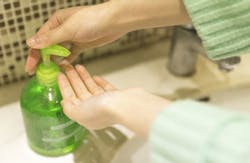Surfactants, detergent substances found in soap products, pose no risk to the environment, a new report has concluded.
Surfactants are used in a wide range of personal care and cleaning products including soaps, shampoos and detergents. They have special properties that dissolve fat yet are water soluble, because they consist of components that have a hydrophilic head and a hydrophobic tail.
For their report, researchers analyzed findings regarding the use, disposal, treatment and risk to the aquatic environment of the most important surfactant ingredients in North America.
They examined more than 250 published and unpublished scientific studies on the use, fate, toxicity, environmental properties, chemical structure and physical and chemical properties of surfactants. These studies covered alcohol sulfate (AS), alcohol ethoxysulfate (AES), linear alkylbenzene sulfonate (LAS), alcohol ethoxylate (AE) and long-chain alcohol (LCOH).
According to the researchers, prospective risk assessments of AS, AES, AE, LAS and LCOH demonstrate that these substances, although used in very high volumes and widely released into the aquatic environment, have no adverse impact on aquatic or sediment environments at current levels of use.
Moreover, retrospective risk assessments of these same substances clearly demonstrate that the conclusions of the prospective risk assessments are valid and confirm that these substances do not pose a risk to aquatic or sediment environments.
"We humans use several million tons of surfactants a year on a global scale. It amounts to billions of kilos, so these are substances that you really don't want to release into the environment unless you're thoroughly familiar with them," commented senior researcher Hans Sanderson from Aarhus University in Denmark, one of the authors of the report.
The substances are made so that they degrade rapidly and therefore do not pose a risk to the environment, Sanderson explained.
"It's the most commonly used substances of all that go directly into the wastewater, so it's important to keep track of them and ensure that there are no unpleasant surprises in the treatment plants or in the environment," Sanderson added.
The report, titled Environmental Safety of the Use of Major Surfactant Classes in North America, has been published in the scientific journal Critical Reviews in Environmental Science.
